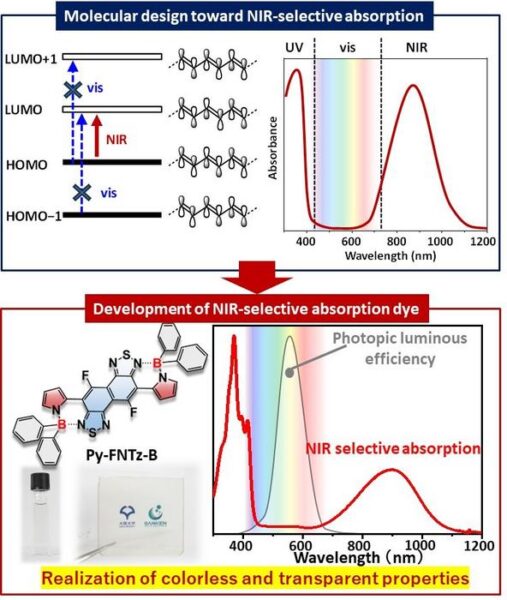Researchers from SANKEN at Osaka University have systematically designed a large, complex molecule that is completely colorless and transparent but absorbs near-infrared radiation. This breakthrough could lead to new applications in various fields, including solar cells, transistors, chemotherapy, and photodetectors.
Organic semiconducting materials have garnered significant interest for high-tech applications. However, creating molecules that absorb specific ranges of the spectrum, such as near-infrared light but not visible light, has been challenging. The absorbance of light by an organic compound depends on the arrangement of electrons between regions around atoms known as orbitals.
Rational Approach to Constructing Molecules with Desired Electronic Transitions
The main challenge faced by the researchers was finding a rational approach to constructing molecules with the desired electronic transitions. Soichi Yokoyama, the lead author of the study, explains, “To do so, we focused on large structures having many delocalized electrons, using theoretical calculations to guide our selections.”
The compounds were based on a donor-acceptor-donor system, utilizing a naphthobisthiadiazole group as the acceptor combined with either pyrrole or indenopyrrole donor groups along with boron bridges. This specialized structure allowed electrons to spread out over wider areas of the molecules, producing the desired type of light absorption.
Exhaustive Characterization and Potential Applications
The new molecule was exhaustively characterized and found to absorb near-infrared light but not in the visible region of the spectrum, as planned. Yutaka Ie, the senior author of the study, notes, “A somewhat similar molecule absorbing near-infrared radiation was reported some time ago, but this compound also absorbed visible light and so appeared blue. Our goal was to find a molecule that showed no color at all, to allow specific applications. A combination of an extended polyene structure and orbital symmetry were key.”
The molecule was found to act as a semiconductor, and the pyrrole-based compound could also be used to construct a phototransistor responsive to near-infrared light. The researchers expect this work to pave the way for the future design of transparent, colorless molecules that respond to near-infrared light, leading to many new applications.
Many uses for organic compounds that show unique optoelectronic properties and specific light absorption characteristics are yet to be explored. This study is expected to open up new possibilities for the design of transparent, colorless molecules that respond to near-infrared light and lead to many new applications.
For more information, explore the following resources:


